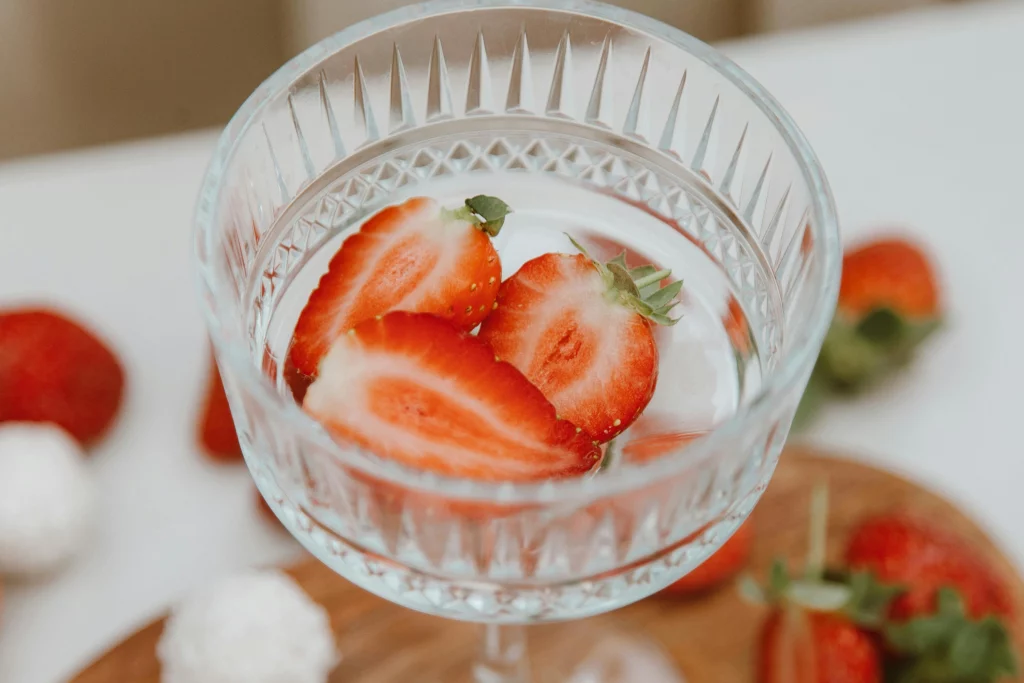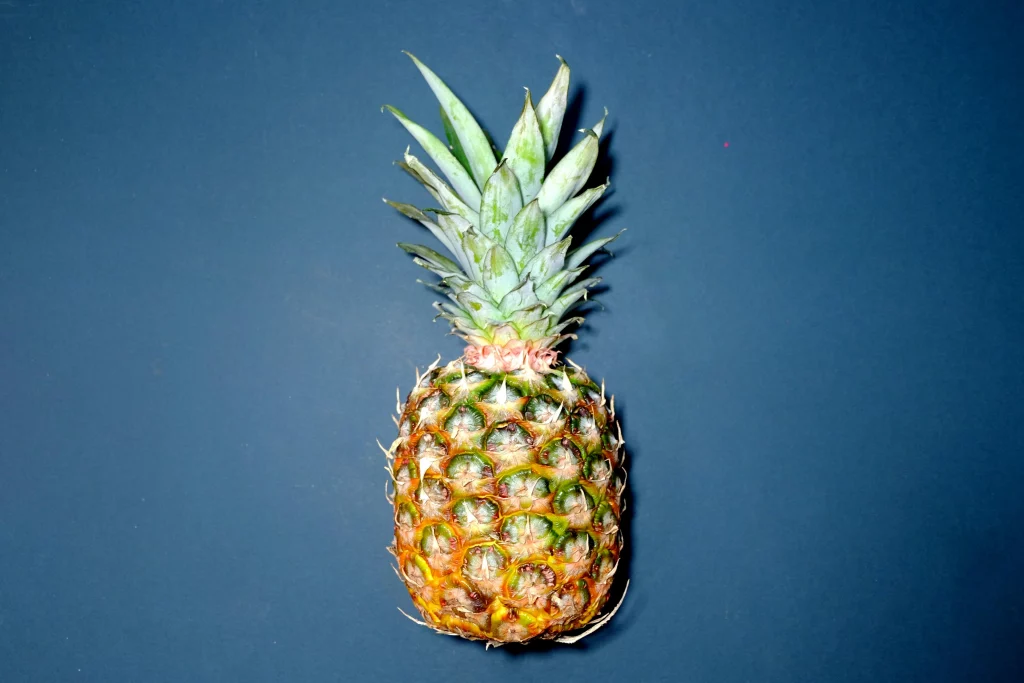Foods that whiten teeth naturally have become a popular choice for people seeking a brighter smile without harsh chemicals or expensive treatments. Incorporating certain fruits, vegetables, and other natural ingredients into your diet can help remove stains, fight bacteria, and even strengthen enamel — all while nourishing your body.
Unlike conventional bleaching agents that can sometimes lead to heightened tooth sensitivity, certain foods naturally contribute to a whiter, healthier smile in a much gentler manner. Incorporating these foods into your daily meals and snacks offers a convenient and accessible approach to oral care.
In this blog, we’ll examine five foods recognized for their teeth-whitening properties, explore the underlying mechanisms, and reference insights from dental experts at GPD Dental. You’ll also find practical suggestions for maximizing the benefits of these natural alternatives, all while supporting overall oral health and maintaining proper nutrition.
How Foods Can Naturally Whiten Teeth
Daily habits, it turns out, exert a significant influence on dental health, particularly in regard to tooth coloration. Common beverages such as coffee, tea, and red wine, as well as smoking and the consumption of various processed foods are widely recognized contributors to dental staining and discoloration. Interestingly, certain foods possess properties that may help counteract this effect, thereby supporting the restoration of a tooth’s natural brightness.
Foods associated with natural tooth whitening do more than simply promote general health. These dietary choices can actively foster the maintenance of cleaner, more radiant teeth due to their specific composition, which includes natural enzymes, mild acids, and a range of beneficial nutrients. Together, these elements assist in breaking down surface stains, fortifying enamel, and encouraging optimal oral hygiene.
Several mechanisms contribute to these effects:
Abrasive texture: Crunchy fruits and vegetables (e.g., apples, carrots) can serve as gentle abrasives, removing surface stains and plaque through their fibrous consistency during mastication.
Natural acids and enzymes: Certain fruits, such as strawberries and pineapples, contain enzymes like malic acid and bromelain, which are capable of dissolving or loosening some forms of dental staining.
Nutrient content: Foods rich in calcium, phosphorus, and vitamin C may help reinforce tooth enamel and support gum health, both of which are essential for a bright, healthy smile.
Saliva stimulation: The act of chewing these foods can enhance saliva production. Saliva plays a critical role in oral health by helping to rinse away food particles, neutralize harmful acids, and maintain a balanced oral pH.
Collectively, these natural processes can contribute to the maintenance of whiter teeth, without reliance on aggressive chemical whitening agents. The subsequent section will highlight five specific foods that can be incorporated into a regular diet to enhance dental appearance in a natural manner.
Strawberries: Nature’s Teeth Whitening Fruit

Strawberries offer more than just culinary appeal; they also serve as a natural means of teeth whitening. These fruits are rich in malic acid, an organic compound recognized for its ability to break down surface stains and discoloration on dental enamel.
To utilize strawberries for this purpose, begin by mashing a ripe strawberry and combining it with a small quantity of baking soda to form a paste. This mixture should be applied to the teeth using a soft brushing technique, no more than once per week. It is essential to rinse thoroughly afterward to ensure that residual acidity does not compromise the enamel. The efficacy of this method lies in the malic acid’s exfoliating properties, which gently remove surface debris. Additionally, strawberries contain vitamin C, which supports gum health and can help reduce inflammation.
It is important to exercise caution and avoid excessive use of this treatment, as overexposure to acidic compounds may result in enamel erosion. Moderation is key to achieving benefits without adverse effects.
Crunchy Apples: The Natural Toothbrush

Apples have frequently been referred to as “nature’s toothbrush,” and for good reason. Their crisp, fibrous texture assists in the mechanical removal of dental plaque and surface stains through the act of chewing. This physical cleansing is complemented by apples’ ability to stimulate salivary flow, which plays a crucial role in rinsing away food particles and maintaining oral hygiene.
Furthermore, apples are a natural source of vitamin C, an essential nutrient that supports the health and strength of gum tissue. Importantly, the fibrous consistency of apples enables them to polish tooth surfaces gently, reducing debris without compromising enamel integrity. Consuming an apple after meals may help mitigate the effects of sugary or acidic foods by providing a cleansing effect, thereby supporting overall dental health.
Pineapple: Bromelain Power for a Brighter Smile

Pineapple contains the enzyme bromelain, which is recognized for its proteolytic properties and potential oral health benefits. Bromelain assists in the breakdown of proteins, contributing to the reduction of dental plaque.
Significance of Bromelain:
Functions as a natural agent for stain removal.
Inhibits bacterial growth that contributes to plaque and periodontal disease.
Promotes oral hygiene by maintaining cleaner teeth over time.
Incorporating fresh pineapple into one’s diet whether consumed directly or blended into smoothies offers a palatable means of supporting oral cleanliness and enhancing dental aesthetics.
Carrots: Teeth-Friendly Crunch and Vitamin Boost

Carrots, often celebrated for their positive effects on ocular health, also contribute significantly to oral hygiene. Their firm texture acts as a natural abrasive, assisting in the removal of residual food particles and dental plaque from tooth surfaces.
Beyond mechanical cleaning, carrots offer notable nutritional advantages. They are rich in vitamin A, an essential nutrient that plays a key role in the formation and repair of tooth enamel. Additionally, the act of chewing carrots stimulates saliva production, which in turn helps neutralize harmful acids in the oral cavity. Carrots also contain antioxidants that support the maintenance of healthy gum tissue. Incorporating raw carrots into one’s daily diet is a simple and effective strategy for promoting dental health.
Dairy Products: Calcium and Casein for Strong Teeth

Cheese, yogurt, and milk play a significant role in maintaining dental health due to their high calcium and casein content. These nutrients contribute to the strengthening and remineralization of tooth enamel, enhancing resistance to staining.
Dairy products assist oral health in several ways. They help neutralize acids produced by oral bacteria, which can otherwise erode enamel. In addition, proteins found in dairy form a protective film over teeth, offering further defense. Regular inclusion of dairy also supports the strength of bones and gums. In summary, consuming moderate amounts of dairy can contribute to a naturally whiter smile and promote overall oral health.
Additional Tips for Maintaining White Teeth Naturally
Achieving and maintaining white teeth isn’t a matter of relying solely on specific foods; rather, it requires consistent daily habits and informed choices. Several practical strategies can support optimal oral aesthetics.
Foremost, regular hydration proves highly beneficial. Consuming water particularly following meals serves to rinse away residual food particles and pigments before they adhere to dental enamel.
The use of sugar-free chewing gum is also advantageous. This practice stimulates salivary flow, which assists in naturally cleansing the oral cavity by reducing bacterial presence and neutralizing acids that may compromise tooth brightness.
Routine professional dental cleanings remain essential. Dental practitioners, such as those at GPD Dental, are equipped to remove surface stains and accumulated plaque beyond the reach of conventional brushing. Periodic checkups further facilitate early detection and management of oral health concerns.
It is advisable to limit exposure to substances known to cause staining. Reducing consumption of tobacco and dark-pigmented beverages including coffee, tea, soda, and red wine or utilizing a straw to minimize direct contact with teeth, can help preserve enamel coloration.
Finally, the use of dentist-recommended whitening products, including a soft-bristled toothbrush and gentle whitening toothpaste, supports ongoing maintenance of tooth brightness without compromising enamel integrity.
By integrating mindful dietary practices with diligent oral hygiene and regular professional oversight, individuals can effectively promote and sustain a naturally bright, healthy smile.
Foods to Avoid If You Want to Keep Teeth White
Certain foods and beverages, while enjoyable or even nutritious, are rather notorious for their tendency to stain teeth and contribute to discoloration. For example, coffee and black tea both popular choices contain dark pigments and significant levels of tannins, substances that are well-documented for their ability to adhere to tooth enamel and cause gradual staining.
Red wine presents a particularly complex challenge, as its acidity, deep coloration, and tannin content combine to make it especially effective at leaving lasting marks on dental surfaces.
Even fruits often hailed for their health benefits, such as blueberries, blackberries, and cherries, possess richly pigmented compounds. These can lead to noticeable staining over time, despite their nutritional value.
Condiments like soy sauce and balsamic vinegar, due to their darkness and acidity, similarly have the potential to erode enamel and promote staining.
Sodas particularly those with darker hues, such as cola pose a dual threat. Not only can they stain teeth, but their acidic nature also weakens enamel, increasing susceptibility to further discoloration.
That said, it is not necessary to eliminate these items from one’s diet entirely. Simple strategies, such as rinsing the mouth with water after consumption or using a straw to limit direct contact with teeth, can help reduce the risk of staining while still allowing for enjoyment of these foods and drinks.
When to See a Dentist for Teeth Whitening
While home remedies think baking soda or fruit pastes may offer minor improvements to the brightness of your teeth, these methods are generally most effective for superficial stains. For persistent or deeper discoloration, it’s often advisable to seek professional dental intervention.
You should consider scheduling a consultation at GPD Dental if:
Regular oral hygiene and mindful eating habits haven’t noticeably improved tooth color.
You desire faster or more pronounced whitening results than natural methods can deliver.
You experience sensitivity or have concerns about enamel integrity and would benefit from expert advice.
Over-the-counter whitening products have proven ineffective, or you’re uncertain about their safety for your specific needs.
At GPD Dental, dental professionals will assess the underlying reasons for your tooth discoloration and recommend individualized, evidence-based whitening treatments. These approaches prioritize both efficacy and the long-term health of your teeth and gums.
Conclusion
Curious about achieving a naturally brighter smile? Incorporating five specific foods into your daily diet can significantly impact dental health and the appearance of your teeth. While dietary choices play a vital role, seeking guidance from dental professionals, such as the team at GPD Dental, ensures comprehensive and personalized care. Taking these steps can set you on a clear path toward a whiter, healthier smile.
Frequently Asked Questions
1. Can eating certain foods really whiten teeth?
Exactly! Crunchy fruits and vegetables help scrub away surface stains thanks to their natural abrasive texture. Meanwhile, enzymes found in foods like pineapple and strawberries work to break down stubborn stains on your teeth. These natural foods not only help whiten your smile but also support overall oral health. Incorporating them into your diet can be a simple and tasty way to keep your teeth looking their best.
2. How often should I use strawberries or other natural whitening foods?
Using natural remedies like strawberry paste can help brighten your smile, but it’s important to limit this to no more than once a week to protect your enamel from damage. On the other hand, incorporating whitening foods like crunchy fruits and vegetables into your daily diet is both safe and beneficial for maintaining healthy teeth. These foods gently clean your teeth and support overall oral health without harsh chemicals. Consistency is key—making these natural choices a regular habit can help keep your smile bright and healthy over time.
3. Are natural foods as effective as professional whitening?
Natural foods can help lighten minor stains and promote overall oral health, but they typically can’t match the effectiveness of professional whitening treatments for more severe discoloration. For noticeable results, especially with deep or stubborn stains, consulting a dental professional is the best approach. Combining natural care with expert treatments can give you a healthier, brighter smile.
4. Can these foods cause tooth sensitivity?
Most whitening foods are gentle and safe, but acidic fruits like strawberries and pineapple can cause tooth sensitivity if used too often. To protect your enamel, always rinse your mouth with water afterward and avoid letting these acidic foods linger on your teeth for too long. Moderation and proper care help keep your smile bright without discomfort.
5. Should I stop drinking coffee or tea to keep my teeth white?
You don’t have to completely give up these staining foods and drinks, but minimizing their intake and rinsing your mouth afterward can help reduce discoloration. Pairing this with regular consumption of whitening foods and maintaining good oral hygiene will keep your smile brighter and healthier over time.


